Instruction
Close the gap to shallow angle of attack
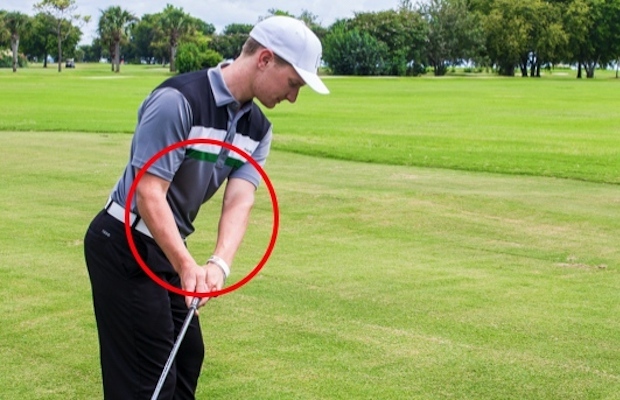
Average golfers produce several different kinds of ball flights, but the most common one I see is a low-launching, high-spinning shot that fades away from the target. It’s a ball flight that I usually see paired with a deep divot. The goal for these golfers is to reverse those contact characteristics and resultant ball flight — they will usually play better with a ball flight that launches higher and spins less, and they’ll be more consistent with a shallower angle of attack.
There are numerous mechanical reasons why golfers hit low-launching, high-spinning shots, however, and an all too common reason is a takeaway with the club going behind the hands. This type of takeaway will cause the lead arm to quickly separate from the chest and leave a large gap in the forearms that will likely result in a steep downswing with an out-to-in path.
Before discussing the fix, we need to examine the design of the golf club and how it is meant to function. The golf club sits on the ground at an angle because of its lie angle. For that reason, the club should travel with some relation to the angle established at address. I do not mean it needs to stay on that imaginary line, but rather that there is an acceptable range the club should move throughout the swing to produce consistent, functional shots. To achieve YOUR desired backswing and downswing plane, there should be a blend of shallow/horizontal and steep/vertical components. The club needs to go around the body, but also upward on the backswing at a fairly constant rate.
To further clarify, I’ll relate it to a javelin being thrown. The thrower will launch the javelin up into the air, but also downfield at the same time. A javelin thrower will not be effective if he throws his javelin even with the ground or straight up in the air. It’s a blend.
Problem
A gap takeaway means the club goes too much around the body. This will require the golfer to lift the club upward. Not blending the two components (horizontal and vertical) and doing them separate will tend to stall the pivot and make it difficult for the body to interact with the ground correctly. The downswing will then likely be too steep with an out-to-in path.
Solution
The solution to closing the gap is to reverse the takeaway by moving the club more upward and less around the body. Exaggerating this will likely result in a takeaway somewhere in the middle.
Steps
No. 1: Body — Less Forearm Rotation
- Try having the lead forearm move underneath the trail forearm on the takeaway. Doing this move with a centered head will likely result in the forearms, shoulders and hips working on a steeper plane.
No. 2: Club — Hinging of the wrists
- The club should also work on a steeper plane in the takeaway. Changing the movement of the wrists will accomplish this change. The wrists need to hinge rather than bend so much. The sensation should be that the lead hand presses the handle of the club downwards.
Result
Incorporating these two exaggerated changes will “close the gap” in the takeaway. It will be easier to continue blending the two components (horizontal and vertical) throughout the backswing. This will help achieve a more desirable backswing and a shallower, more outward path on the downswing.
- LIKE17
- LEGIT2
- WOW2
- LOL2
- IDHT0
- FLOP2
- OB1
- SHANK7
Instruction
The Wedge Guy: The easiest-to-learn golf basic

My golf learning began with this simple fact – if you don’t have a fundamentally sound hold on the golf club, it is practically impossible for your body to execute a fundamentally sound golf swing. I’m still a big believer that the golf swing is much easier to execute if you begin with the proper hold on the club.
As you might imagine, I come into contact with hundreds of golfers of all skill levels. And it is very rare to see a good player with a bad hold on the golf club. There are some exceptions, for sure, but they are very few and very far between, and they typically have beat so many balls with their poor grip that they’ve found a way to work around it.
The reality of biophysics is that the body moves only in certain ways – and the particulars of the way you hold the golf club can totally prevent a sound swing motion that allows the club to release properly through the impact zone. The wonderful thing is that anyone can learn how to put a fundamentally sound hold on the golf club, and you can practice it anywhere your hands are not otherwise engaged, like watching TV or just sitting and relaxing.
Whether you prefer an overlap, interlock or full-finger (not baseball!) grip on the club, the same fundamentals apply. Here are the major grip faults I see most often, in the order of the frequency:
Mis-aligned hands
By this I mean that the palms of the two hands are not parallel to each other. Too many golfers have a weak left hand and strong right, or vice versa. The easiest way to learn how to hold the club with your palms aligned properly is to grip a plain wooden ruler or yardstick. It forces the hands to align properly and shows you how that feels. If you grip and re-grip a yardstick several times, then grip a club, you’ll see that the learning curve is almost immediate.
The position of the grip in the upper/left hand
I also observe many golfers who have the butt of the grip too far into the heel pad of the upper hand (the left hand for right-handed players). It’s amazing how much easier it is to release the club through the ball if even 1/4-1/2″ of the butt is beyond the left heel pad. Try this yourself to see what I mean. Swing the club freely with just your left hand and notice the difference in its release from when you hold it at the end of the grip, versus gripping down even a half inch.
To help you really understand how this works, go to the range and hit shots with your five-iron gripped down a full inch to make the club the same length as your seven-iron. You will probably see an amazing shot shape difference, and likely not see as much distance loss as you would expect.
Too much lower (right) hand on the club
It seems like almost all golfers of 8-10 handicap or higher have the club too far into the palm of the lower hand, because that feels “good” if you are trying to control the path of the clubhead to the ball. But the golf swing is not an effort to hit at the ball – it is a swing of the club. The proper hold on the club has the grip underneath the pad at the base of the fingers. This will likely feel “weak” to you — like you cannot control the club like that. EXACTLY. You should not be trying to control the club with your lower/master hand.
Gripping too tightly
Nearly all golfers hold the club too tightly, which tenses up the forearms and prevents a proper release of the club through impact. In order for the club to move back and through properly, you must feel that the club is controlled by the last three fingers of the upper hand, and the middle two fingers of the lower hand. If you engage your thumbs and forefingers in “holding” the club, the result will almost always be a grip that is too tight. Try this for yourself. Hold the club in your upper hand only, and squeeze firmly with just the last three fingers, with the forefinger and thumb off the club entirely. You have good control, but your forearms are not tense. Then begin to squeeze down with your thumb and forefinger and observe the tensing of the entire forearm. This is the way we are made, so the key to preventing tenseness in the arms is to hold the club very lightly with the “pinchers” — the thumbs and forefingers.
So, those are what I believe are the four fundamentals of a good grip. Anyone can learn them in their home or office very quickly. There is no easier way to improve your ball striking consistency and add distance than giving more attention to the way you hold the golf club.
More from the Wedge Guy
- The Wedge Guy: Golf mastery begins with your wedge game
- The Wedge Guy: Why golf is 20 times harder than brain surgery
- The Wedge Guy: Musings on the golf ball rollback
- LIKE83
- LEGIT13
- WOW4
- LOL1
- IDHT0
- FLOP4
- OB1
- SHANK8
Instruction
Clement: Stop ripping off your swing with this drill!

Not the dreaded headcover under the armpit drill! As if your body is defective and can’t function by itself! Have you seen how incredible the human machine is with all the incredible feats of agility all kinds of athletes are accomplishing? You think your body is so defective (the good Lord is laughing his head off at you) that it needs a headcover tucked under the armpit so you can swing like T-Rex?
- LIKE0
- LEGIT1
- WOW2
- LOL0
- IDHT0
- FLOP0
- OB0
- SHANK2
Instruction
How a towel can fix your golf swing

This is a classic drill that has been used for decades. However, the world of marketed training aids has grown so much during that time that this simple practice has been virtually forgotten. Because why teach people how to play golf using everyday items when you can create and sell a product that reinforces the same thing? Nevertheless, I am here to give you helpful advice without running to the nearest Edwin Watts or adding something to your Amazon cart.
For the “scoring clubs,” having a solid connection between the arms and body during the swing, especially through impact, is paramount to creating long-lasting consistency. And keeping that connection throughout the swing helps rotate the shoulders more to generate more power to help you hit it farther. So, how does this drill work, and what will your game benefit from it? Well, let’s get into it.
Setup
You can use this for basic chip shots up to complete swings. I use this with every club in my bag, up to a 9 or 8-iron. It’s natural to create incrementally more separation between the arms and body as you progress up the set. So doing this with a high iron or a wood is not recommended.
While you set up to hit a ball, simply tuck the towel underneath both armpits. The length of the towel will determine how tight it will be across your chest but don’t make it so loose that it gets in the way of your vision. After both sides are tucked, make some focused swings, keeping both arms firmly connected to the body during the backswing and follow through. (Note: It’s normal to lose connection on your lead arm during your finishing pose.) When you’re ready, put a ball in the way of those swings and get to work.

Get a Better Shoulder Turn
Many of us struggle to have proper shoulder rotation in our golf swing, especially during long layoffs. Making a swing that is all arms and no shoulders is a surefire way to have less control with wedges and less distance with full swings. Notice how I can get in a similar-looking position in both 60° wedge photos. However, one is weak and uncontrollable, while the other is strong and connected. One allows me to use my larger muscles to create my swing, and one doesn’t. The follow-through is another critical point where having a good connection, as well as solid shoulder rotation, is a must. This drill is great for those who tend to have a “chicken wing” form in their lead arm, which happens when it becomes separated from the body through impact.
In full swings, getting your shoulders to rotate in your golf swing is a great way to reinforce proper weight distribution. If your swing is all arms, it’s much harder to get your weight to naturally shift to the inside part of your trail foot in the backswing. Sure, you could make the mistake of “sliding” to get weight on your back foot, but that doesn’t fix the issue. You must turn into your trial leg to generate power. Additionally, look at the difference in separation between my hands and my head in the 8-iron examples. The green picture has more separation and has my hands lower. This will help me lessen my angle of attack and make it easier to hit the inside part of the golf ball, rather than the over-the-top move that the other picture produces.


Stay Better Connected in the Backswing
When you don’t keep everything in your upper body working as one, getting to a good spot at the top of your swing is very hard to do. It would take impeccable timing along with great hand-eye coordination to hit quality shots with any sort of regularity if the arms are working separately from the body.
Notice in the red pictures of both my 60-degree wedge and 8-iron how high my hands are and the fact you can clearly see my shoulder through the gap in my arms. That has happened because the right arm, just above my elbow, has become totally disconnected from my body. That separation causes me to lift my hands as well as lose some of the extension in my left arm. This has been corrected in the green pictures by using this drill to reinforce that connection. It will also make you focus on keeping the lead arm close to your body as well. Because the moment either one loses that relationship, the towel falls.


Conclusion
I have been diligent this year in finding a few drills that target some of the issues that plague my golf game; either by simply forgetting fundamental things or by coming to terms with the faults that have bitten me my whole career. I have found that having a few drills to fall back on to reinforce certain feelings helps me find my game a little easier, and the “towel drill” is most definitely one of them.
- LIKE12
- LEGIT1
- WOW2
- LOL0
- IDHT0
- FLOP2
- OB0
- SHANK8
-

 19th Hole2 weeks ago
19th Hole2 weeks agoJohn Daly stuns fans into silence with brutal opening tee shot on PGA Tour Champions
-

 19th Hole4 days ago
19th Hole4 days agoThings got heated at the Houston Open between Tony Finau and Alejandro Tosti. Here’s why
-

 19th Hole16 hours ago
19th Hole16 hours agoReport: Tiger Woods has ‘eliminated sex’ in preparation for the 2024 Masters
-

 19th Hole2 weeks ago
19th Hole2 weeks ago2-time major champ announces shock retirement from the sport at age of 33
-

 19th Hole2 weeks ago
19th Hole2 weeks agoCharlie Woods finds it tough going on American Junior Golf Association debut
-

 19th Hole2 weeks ago
19th Hole2 weeks agoEdoardo Molinari reveals the latest PGA Tour golfer to turn down ‘good offer’ from LIV Golf
-

 19th Hole3 weeks ago
19th Hole3 weeks agoScottie Scheffler had an interesting response when asked how he ‘quiets the noise’ following Players victory
-

 19th Hole2 weeks ago
19th Hole2 weeks agoJon Rahm dealt fresh blow to hopes of qualifying for 2025 Ryder Cup

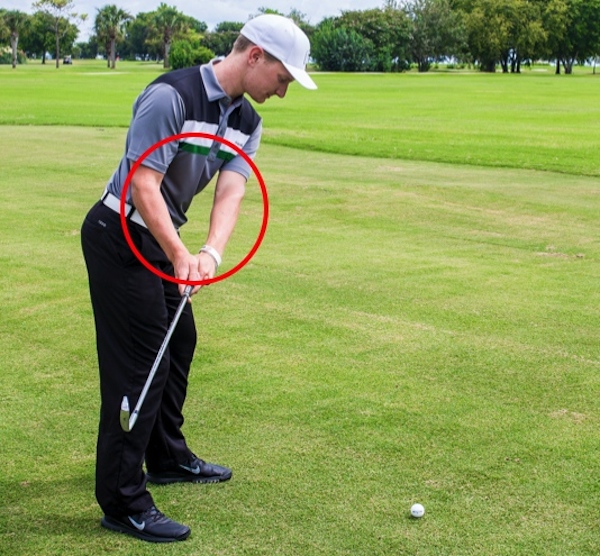
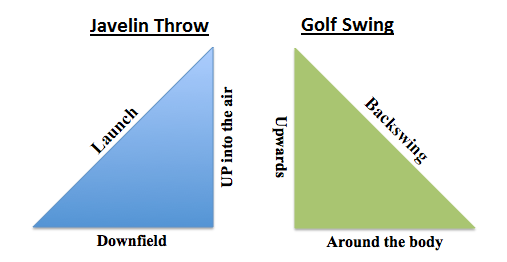
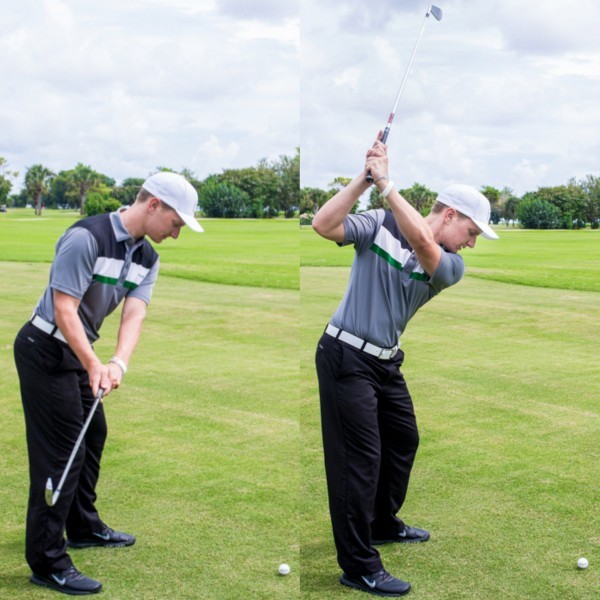
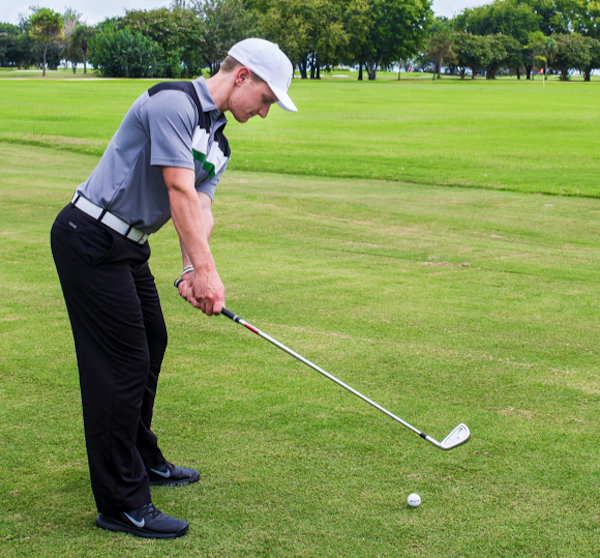
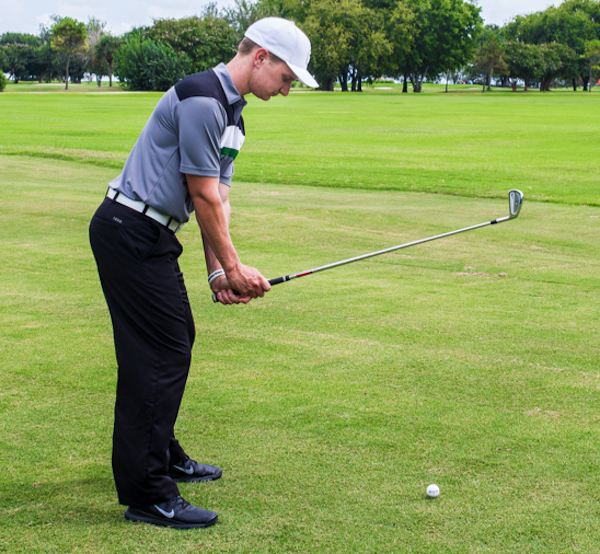

















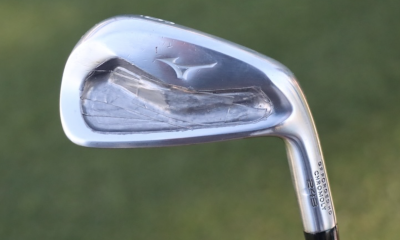

Matt Christian
Nov 9, 2014 at 3:02 pm
http://youtu.be/oY3LGVreUuI
enrique
Nov 8, 2014 at 5:19 pm
Now write an article for us that shallow out too much on the way down – coming from the inside – re-routing.
classik
Nov 7, 2014 at 11:37 am
Good write up for am’s struggling.
parker
Nov 7, 2014 at 1:30 am
I use to perform this exact move in the golf swing creating huge divots, low trajectory, and horrible fades. I fixed it by doing what this article suggest, basically keeping the club head outside of the hands on the way back and worked on shallowing my divots. What a change in my game it has made, I hit higher straighter and more consistently with all my clubs. I wish this article had be published 5 yrs ago.
other paul
Nov 6, 2014 at 11:39 pm
So, after hitting balls in my garage for a half hour, I decided to mass with the gap using my 3 iron. Definitely noticed a difference when experimenting with the gap size. Also discovered that I can hit a 3 iron now ???? your article helped someone.
Andrew Moore
Nov 7, 2014 at 12:33 pm
I am glad I could make a difference. Thank you!
alex
Nov 6, 2014 at 10:05 pm
Of course it looks like it’s too much…because it is! It has to be exaggerated because it’s a feel or a drill. Not something you have to copy exactly.
Ryan
Nov 6, 2014 at 9:20 pm
Thanks for the article. These are the exact movements I’m working on right now for my backswing – more so the hinging up feel like I read in a Haney book. Glad to see third-party confirmation that I’m on the right track.
Andrew Moore
Nov 7, 2014 at 12:34 pm
Keep working on it. Your hard work will pay off!
DaveMac
Nov 6, 2014 at 7:23 pm
Is it me or does the fix look like Rickie Fowler’s old swing? Yes the one he had Butch fix!
So I am not keen on this article, the primary fault does not always produce the results suggested (high spin slice).
Equally the fix applied incorrectly could produce exactly the shot it is supposed to fix.
Use with caution.
Ryan
Nov 6, 2014 at 9:19 pm
They are exaggerated to show the two movements….of course it’s use with caution (and with video), but every golf tip is that way.
JJ
Nov 7, 2014 at 10:05 am
I’m no expert but I think any of us would take Rickys swing (pre Butch) with whatever swing faults he had/has. Plus as mentioned, it was an exaggeration.
Keep in mind, a lot of times the pros and good players have the opposite problems as we have. Most of us amateurs take it back low and inside and come over it on the way down. Pros often get too shallow on the way down. It’s funny because you’ll see someone like Tiger, Graeme, etc.. on the tee box taking practice swings of what looks like an over the top swipe across the ball. They probably do that as the opposite extreme as us because they know it will help there actual swing end up somewhere in between. I could be wrong but I think you get my point. Heh.
Andrew Moore
Nov 7, 2014 at 12:38 pm
JJ, you are spot on with your assessment. It is difficult to change a pattern especially if you have been playing a long time. Exaggerated moves are meant to expedite that process, but like DaveMac said you should “use with caution”. If you perform any exaggerated move for long enough you can certainly go the other way with your swing. I hope you liked the article!
marcel
Nov 6, 2014 at 7:09 pm
such a confusing article… getting lesson on the website is like getting a hair cut on the website… surely coach can do better job as the hairdresser would do. my golf coach always told me… these free instructions are keeping me in business as everyone gets worse off confused coming back for more… so yes great article!
other paul
Nov 6, 2014 at 9:27 pm
Ha! I have heard the same thing. Free online articles and YouTube are ruining us all. Mark crossfield helped me though. Love his videos. I went from a 38 to a 10 thanks to his stuff and have to thank my swing coach Rob for cleaning things up for me as well.
dr bloor
Nov 7, 2014 at 8:08 am
I’m sure your coach will be pleased that you took the time to read the article.